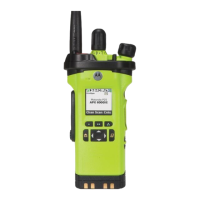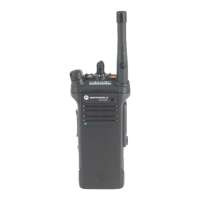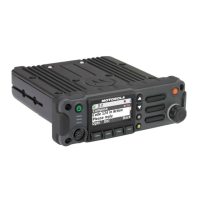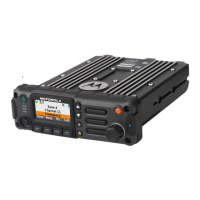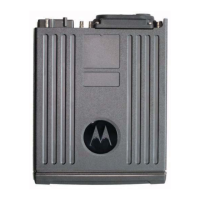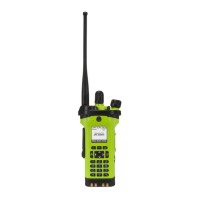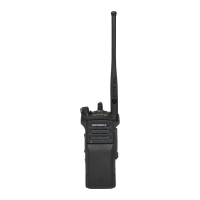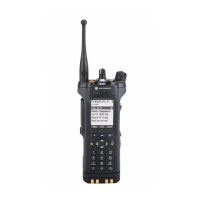Chapter 3 Theory of Operation
This chapter provides a detailed circuit description of the ASTRO APX 1000 mainboard and keypad
boards. When reading the theory of operation, refer to the appropriate schematic and component
location diagrams located in the back of this manual. This detailed theory of operation can help
isolate the problem to a particular component.
The ASTRO APX 1000 M1.5, APX 1000 M2 and APX 1000 M3 radio, which is a single-band
synthesized radio, is available in the following frequency bands.
• VHF (136–174 MHz)
• UHF1 (380–470 MHz)
• UHF2 (450–520 MHz)
• 700/800 MHz (764–870 MHz)
All ASTRO APX 1000 radios are capable of analog operation (12.5 kHz or 25 kHz bandwidths),
ASTRO mode (digital) operation (12.5 kHz only), X2-TDMA mode (25 kHz only) and Phase 2 TDMA
mode (12.5 kHz only).
The ASTRO APX 1000 radio (Figure 3-1) consists of the following:
• Main Board – Contains all transmit, receive, and frequency generation circuitry, including the
digital receiver back-end IC and the reference oscillator. The mainboard also contains a dual
core processor, which includes both the microcontroller unit (MCU) and a digital signal
processor (DSP) core, the processor’s memory devices, an audio and power supply support
integrated circuit (IC), a digital support IC, external power amplifier.
• Top Control – Contains a Multi-Function knob, a push button switch used for Emergency call
and a light bar. The top control also includes TX/RX LED that is solid amber upon receive, red
on PTT, and blinks amber on secure TX/RX.
• Main Display – 160 x 90 TFT transflective color LCD.
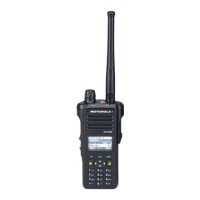
